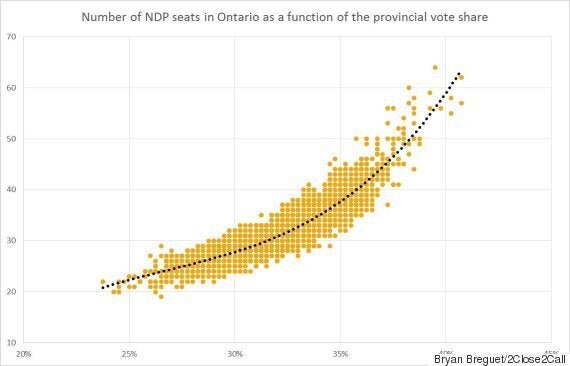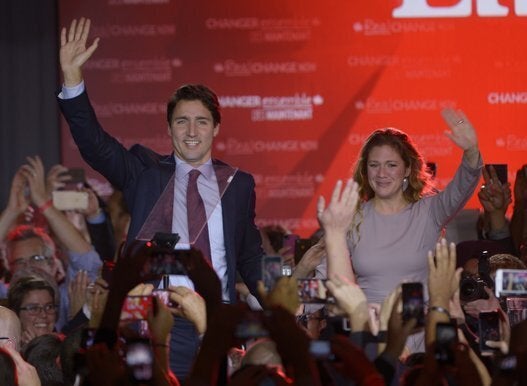NDP Leader Thomas Mulcair could very well finish third in Ontario and still become the next prime minister of Canada.
But his party needs to win at least 32 seats in the vote-rich province and deliver in key battlegrounds of British Columbia and Quebec.
As it currently stands, New Democrats are well ahead in Quebec and B.C., two provinces that could provide more than half of their seats.
The Liberals have Atlantic Canada (although their lead is decreasing), while the Conservatives are obviously ahead in Alberta.
But Mulcair must do better in Ontario than Jack Layton in 2011 if he wants to win. The province boasts about one-third of the seats in the House of Commons.
The problem? Even though the NDP is currently polling first (and has for a while this summer) nationally, they seem to remain second or even third in Ontario. Plus, the New Democratic vote doesn’t appear especially efficient in this province.
The good news? Mulcair just needs to gain about 10 seats.
The graph below represents the current possible outcomes in Ontario based on all the information we currently have (polls, past election results, etc).
On the horizontal axis, you have the possible shares of votes (i.e: the NDP could get as much as 38 percent of the vote in Ontario or as little as 26 percent if we factor the uncertainty of the polls).
The horizontal axis shows the number of seats for each outcome. As you can see, with the same percentages, the NDP can win more or less seats depending on what the other parties do, the efficiency and distribution of the votes, etc (i.e: our electoral system doesn’t translate percentages into seats in a perfect way).

The first thing to notice is that the NDP can actually win Ontario. The chances are slim at 1.2 per cent, based on recent polls, but they exist. On the other hand, a worst case scenario would have the NDP win roughly 20 seats.
In average, however, the NDP is currently around 30 per cent and on pace to win 30 to 35 seats. This is a small increase from the 22 seats in Ontario (when there were only 108 seats in total with the previous electoral map).
Obviously winning 60 seats would help Mulcair become PM but this scenario is not very likely at the moment. If we look at the relationship between the number of MPs elected in Ontario and the scenarios where the NDP win the most seats across the nation, we find a correlation of 0.4, indicating a fairly strong relationship. Again, that’s not surprising as Ontario is the main source of seats in Parliament.
So, it’s perhaps easier to state that as long as the party can win 32 seats in Ontario, it will be the favourite to win the most seats overall.
Ontario remains the one big province currently not falling for the NDP. While a lot of things can happen in 11 weeks, this party can’t expect major gains there unless it can go above 35 percent support. As shown in the graph, the number of seats really only starts to rapidly increase past this threshold.
At the same time, Mulcair doesn’t need to make major gains in this province, nor does he need to actually win it. As long as he can win around 32 seats or more, and assuming he doesn’t drop in B.C. and Quebec (two big assumptions of course), his party can win.
And if you think that result might mean a lack of legitimacy, let’s remember that Stephen Harper won a majority in 2011, but only elected five MPs in Quebec.
Just one poll was released in the first five days of the official campaign -- and those numbers were gathered on the Sunday of a holiday weekend, just hours after the election call.
As such, our early seat projections from Monday remain unchanged.
Bryan Breguet has a B.Sc in economics of politics and a M.sc in economics from the University of Montreal. He founded TooCloseToCall.ca in 2010 where he provides electoral analysis and projections. He has collaborated with the National Post, Journal de Montreal and l’Actualité.
He will provide analysis and updates for The Huffington Post Canada throughout the federal election campaign. For riding by riding projections, visit his interactive simulator.

ALSO ON HUFFPOST:
